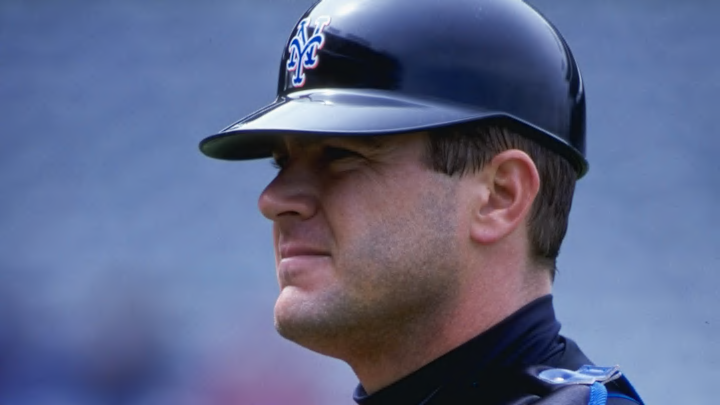Before he was with the New York Mets, Todd Pratt spent much of the 1996 MLB season working part-time for Domino’s. When he wasn't making people happy with pizza, he was a hitting instructor at Bucky Dent’s baseball school. It’s a story you could make a Disney movie out of.
At the time when he delivered his last pizza, Pratt had already spent parts of four seasons in the major leagues with the Philadelphia Phillies and Chicago Cubs. On December 23, 1996, the Mets gave him a chance to trade in his Domino's smock for a catcher's chest protector. They inked him to a minor league deal with a chance to compete for some big league at-bats.
Todd Pratt was an early Christmas gift for the Mets in 1996
Even though Pratt never became a starting catcher, his time in the big leagues was quite notable for a backup. He hit .251/.344/.398 in 1869 big league plate appearances. Much of this was spent with the Phillies. There were 640 plate appearances with the Mets and in a time when they could really use a reliable backup.
Pratt’s first year with the team in 1997 featured a .283/.372/.396 performance in 121 trips to the plate. It would begin a trend for him. In each of his next three seasons thereafter he would put up similar numbers.
As Mike Piazza’s backup for the majority of his stint with the Mets, Pratt batted .265/.354/.414. However, from 1997-2000, he turned in a .282/.363/.434 slash line. It was his poor 98 plate appearances in 2001 prior to a trade back to Philadelphia which dragged his career numbers in New York down.
By far his biggest Mets moment would occur on October 9, 1999. While Piazza was dealing with a thumb injury, Pratt was called upon to start in the NLDS versus the Arizona Diamondbacks. Game 4 took them to extras and with one out in the bottom of the tenth, Pratt hit a solo home run off of Matt Mantei to send the Mets to the next round.
The legacy of a backup catcher is similar to that of a backup goalie in the NHL, a few rungs greater than the backup quarterback on an NFL team. Backup catchers get to play. Pratt, in the biggest of moments, capitalized on the opportunity.
Pratt’s time with the Mets came to a close in mid-2001 when the team thought Vance Wilson could provide them with more in a backup role. It’s debatable if that was the right choice. Both would play their final MLB season in 2006.
